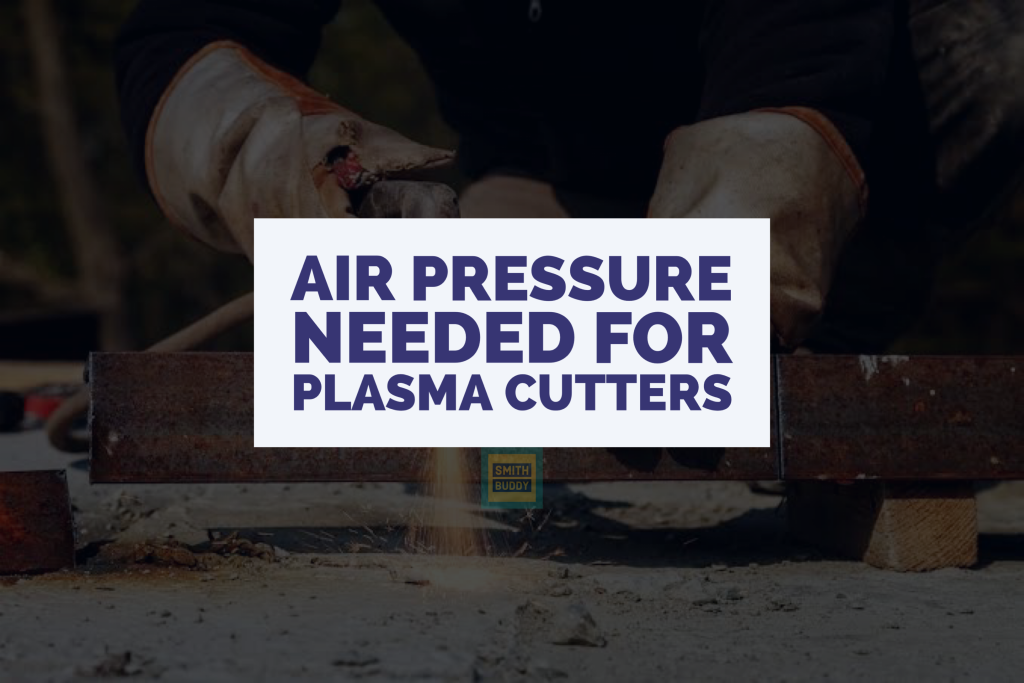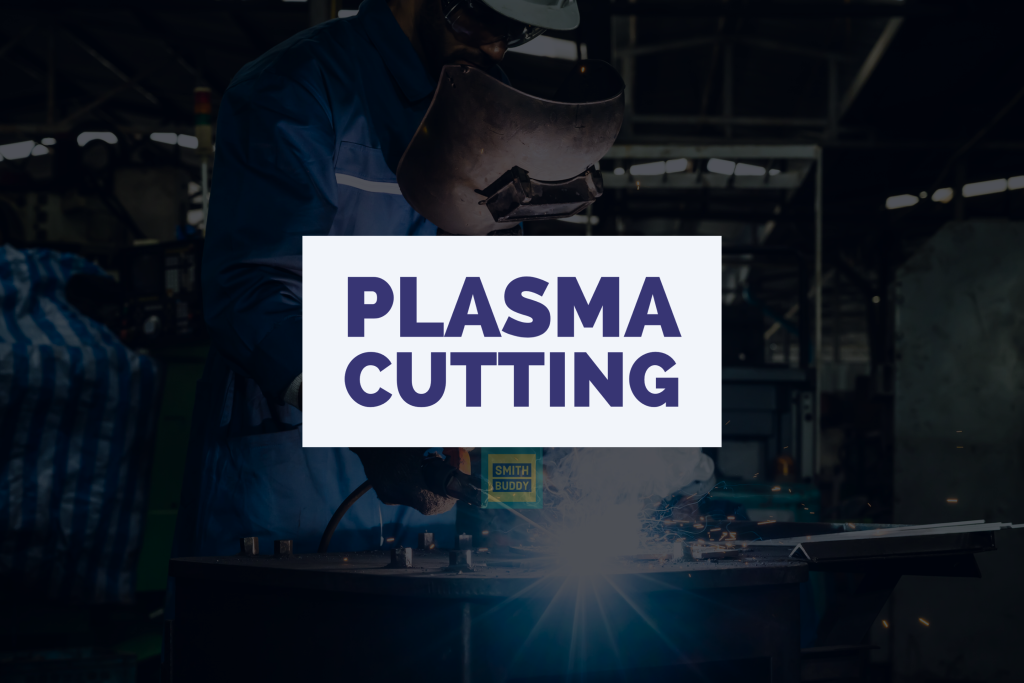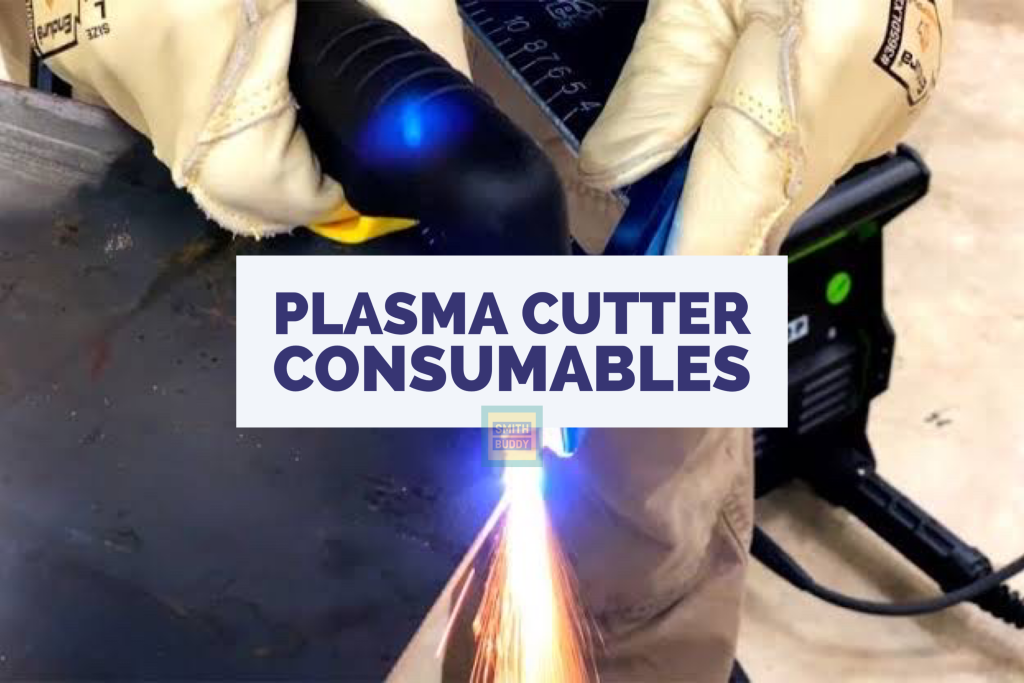A plasma cutter cuts metal with the help of ionized gas. The air compressor helps the plasma cutter to cut in a more precise manner. Usually, a plasma cutter comes with an air compressor; however, it may come without an air compressor.
In this article, we will discuss the required air required for plasma cutting and the other related areas, which will determine to what extent the air pressure affects the plasma cutting.
How does an air compressor helps in plasma cutting?
Conceptually, plasma is the fourth state which appears after solids, liquids, and gas. This means that the heavily heated or ionized gas directly hits the metal workpiece and gets the finer cuts.
Have a look at these plasma cutters that do not require an external air compressor.
Extremely heated fire, alternatively known as plasma, gets into the metal and cuts as per the dimension you need, even without deforming the other parts of the workpiece.

What’s the role of air, then?
The air compressor contributes by offering a clear direction to the plasma, which is used to help ignite the plasma arc and keep it running. The compressed air also helps to blow away the dust and debris created by the cutting process and cool the cutting surface.
Without the air compressor, the plasma cutter would not be able to cut efficiently and will achieve a poor precision rate.
There are other benefits of having a powerful air compressor and a plasma cutter. These are:
- Air converts the plasma into CLEANER plasma flame that helps in precise cutting.
- The air compressor empowers the plasma that helps in cutting the thicker workpiece.
How much air does a plasma cutter require?
Typically, most plasma cutters require 4 and 6 CFM (cubic feet per minute) or 80 to 90 PSI (pounds per square inch) air. With this air pressure, you would easily be able to cut 3/8″ to 7/8″ thick metal workpieces.
The chart below will assist you in understanding the air pressure requirement per the metal thickness.
| Steel Cutting | Air Pressure |
| 3/8″ steel cutting | 4-5 SCFM @ 90-120 PSI |
| 5/8″-3/4″ steel cutting | 6 SCFM @ 90-120 PSI |
| 3/4″-1″ steel cutting | 7-8 SCFM @ 90-120 PSI |
| 1-3/4″ steel cutting | 9 SCFM @ 85 PSI |
Air Pressure Requirement for Mild Steel
| Mild Steel Thickness (mm) | Air Compressor Pressure in PSI | AMPS |
| 0.5 | 40 | 20 |
| 1.6 | 55 | 30 |
| 3.4 | 55 | 40 |
| 5 | 60 | 45 |
| 6 | 60 | 45 |
| 8 | 65 | 50 |
| 10 | 70 | 55 |
| 12 | 75 | 60 |
| 16 | 75 | 60 |
| 20 | 75 | 60 |
Air Pressure Required for Stainless Steel
| Stainless Steel Thcikness (mm) | Air Compressor Pressure in PSI | AMPS |
| 0.5 | 40 | 20 |
| 1.6 | 50 | 30 |
| 3.4 | 55 | 40 |
| 5 | 60 | 45 |
| 6 | 60 | 45 |
| 8 | 65 | 50 |
| 10 | 70 | 55 |
| 12 | 75 | 60 |
| 16 | 75 | 60 |
| 20 | 75 | 60 |
Aire Pressure Needed for Aluminum Steel
| Aluminum Thcikness (mm) | Air Compressor Pressure in PSI | AMPS |
| 0.5 | 40 | 20 |
| 1.6 | 50 | 30 |
| 3.4 | 55 | 40 |
| 5 | 60 | 45 |
| 6 | 60 | 45 |
| 8 | 65 | 50 |
| 10 | 70 | 55 |
| 12 | 75 | 60 |
| 16 | 75 | 60 |
| 20 | 75 | 60 |
Steps of matching an air compressor with the plasma cutter
These steps will help you pair an air compressor with the plasma cutter.

1. Calculate the CFM rating of the plasma cutter. This measures how much air volume the plasma cutter requires to operate.
2. Compare the plasma cutter’s CFM rating to the air compressor’s CFM rating. The air compressor should be able to provide at least the same amount of air volume as the plasma cutter requires.
3. Consider the PSI (pounds per square inch) rating of the plasma cutter and the air compressor. The air compressor should have a PSI rating higher than the PSI rating of the plasma cutter.
4. Choose an air compressor with a tank size that is large enough to fit the volume of air needed by the plasma cutter. A larger tank size will help prevent the compressor from cycling on and off too often.
5. Make sure the air compressor has an appropriate duty cycle rating. This rating indicates how often the compressor can run before it needs to rest.
Impact of altitude, humidity & temperature on air calibration
The air calibration of plasma cutters is affected by the altitude because the air pressure changes with the altitude.
Plasma cutters require a certain amount of air pressure to perform correctly, and the air pressure decreases as the altitude increases. Therefore, it is essential to adjust the plasma cutter’s air calibration according to the environment’s altitude to ensure that it is functioning correctly.
Plasma cutters rely on a steady, clean air supply to provide a consistent cut. Air calibration is affected by temperature and humidity, as both can affect air pressure and composition.
High temperatures can cause the air pressure to increase, which can result in a broader or deeper cut. High humidity can cause water vapor to condense in the air, resulting in impurities that can interfere with the cutting process.
Adjusting the air pressure accordingly can help to ensure a consistent cut, regardless of changes in temperature or humidity.
For instance, people from Florida will experience around a 7% efficiency drop due to the humidity factor. Such efficiency drop may go above 35% depending on the altitude and humidity. Figuring out this problem will be challenging, and here is one simple trick:
Forget the environemntal change, try to add 50% fudge factor for the best result
Alternatively, if your plasma cutter requires 6 SCFM @ 90-120 PSI, you should buy an air compressor with 9 SCFM. This is the easiest way to achieve the best result in any environmental changes.
Does air quality affect plasma cutting?
Air quality can have a significant impact on the performance of a plasma cutter. Poor air quality may contain contaminants that can reduce airflow to the cutting tip, resulting in diminished cutting performance.
Poor air quality can cause the cutter to overheat, leading to reduced cutting speed and decreased overall performance.
Poor air quality refers to the air with oil or dust. Both can affect the plasma cutter components adversely. We always recommend using an air filter so that the welders get the right cutting experience while using a plasma cutter.
The quality of the air filter for the plasma cutter depends on the manufacturer. Generally, it would be best to look for an air filter designed to remove particles larger than 0.3 microns, have a reasonable flow rate, and is designed to last a long time.
Additionally, the filter should be designed to fit your specific plasma cutter model, as this will ensure that it works properly.
Read more about the plasma cutting tips for a better metal cutting experience.
Are there any opposing sides of the air compressor?
The followings are the few opposing sides of an air compressor. However, these are always outweighed by the benefits.
1. Expensive: Air compressors combined with plasma cutters are more expensive than those used for other applications.
2. Low Portability: Due to their size and weight, air compressors used for plasma cutting are not as portable as some other models.
3. High Maintenance: Air compressors used for plasma cutting require regular maintenance to keep them functioning correctly.
4. Noisy: Air compressors used for plasma cutting can be pretty noisy, and this can be a nuisance for some people.
Let’s conclude
For a faster & smoother cut with a plasma cutter, an air compressor is an essential add-on. It provides the necessary air pressure to ensure the plasma cutter works optimally and helps reduce noise and vibration from the plasma cutting process. With a reliable air compressor, you can be sure that your plasma cutter will perform the way it is supposed to, and you‘ll have a reliable, safe, and efficient cutting experience every time.





